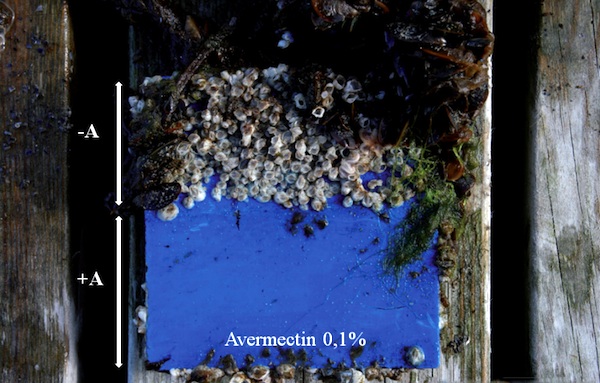Low-emission anti-fouling research shows progress
Research from Boero YachtCoatings, SP Technical Research Institute of Sweden, the University of Portsmouth and the University of Gothenburg demonstrates new biocide technology with ultra-low emissions…
The concept has attracted the interest of the European Committee and has received funding as the Low-Emissions Anti-Fouling (LEAF) project, whose goal is to optimise and test an alternative to the current copper based antifouling systems used in 90 per cent of the worlds marine fleet today.
"The classic copper antifouling strategy cannot be regarded as sustainable in the long run," Dr. Emiliano Pinori of SP Technical Research Institute of Sweden, technical coordinator for the research project, has said.
“We have been working on specific formulations for the LEAF project, taking advantage of the molecular properties of the ingredients to minimize the release of the biocides and at the same time enhance the physical contact between the barnacle and the new paint,” Mauro Legrottaglie of Boero YachtCoatings, work package leader for LEAF, has said.
The toxin used in demonstrating the concept behind the new type of paint is a natural molecule produced by the bacterium Streptomyces avermitilis: avermectin.
Results of the most recent research study has demonstrated an anti-barnacle effect has been achieved with one gram of avermectin per litre of paint—a concentration of 0.1 per cent.
Boero YachtCoatings and six partners from Europe and Brazil are working towards delivering an antifouling product that keeps the emission of biocide from the paint down to 5 nanograms (nanogram=1 billionth of a gram) per square centimetre per day.
According to the project’s findings, the anti-barnacle effect lasts for more than five years and will be able to replace the copper currently used in hull paints.
The experimental paints, which are being manufactured by Boero are being tested in five different stations across Europe and Brazil.
Marine biofouling—the colonization of underwater surfaces by microscopic and macroscopic organisms—results in the loss of hull efficiency as the painted surface becomes infested with barnacles and algae.
The negative effects of so-called “hard foulers” such as barnacles include increased drag resistance, which can increase fuel consumption by as much as 40 per cent, and corrosion due to the destruction of the bottom paint.
Current anti-fouling technology relies on highly poisonous paints that while moderately effective at repelling biofouling also unfortunately releases toxins into the surrounding water.
Global environmental pollution regulators have targeted emissions—the release of toxic or harmful particles—as the primary focus of their attention.
Among manufacturers within the superyacht industry, along with engine manufacturers, it is the paint manufacturers who have perhaps the greatest challenge to curtail emissions from their products.
The LEAF research initiative aims to reduce the use of biocide in antifouling coatings, eliminate the release of toxins from the coatings into the water and extend the service life of antifouling coatings.
“Our published results show that the small amount of avermectin released from the paint is unrelated to the antifouling effectiveness demonstrated in the field; this means we should be able to eliminate the leaching completely and retain the antibarnacle efficacy,” Dr. Pinori has said.
“Zero emissions will be our next goal in the LEAF project,” he concluded.
About 40 owners of personal sail and motor boats and fishing boats have registered to volunteer test the new anti-fouling paint when it becomes available.
During summer 2014, six of these were painted with LEAF anti-fouling paint, feedback on which has been enthusiastic, according to the research team.
Final testing will take place in summer 2015: captains and owners can register on the LEAF website to field test and provide feedback to the project: www.leaf-antifouling.eu
Profile links
NEW: Sign up for SuperyachtNewsweek!
Get the latest weekly news, in-depth reports, intelligence, and strategic insights, delivered directly from The Superyacht Group's editors and market analysts.
Stay at the forefront of the superyacht industry with SuperyachtNewsweek
Click here to become part of The Superyacht Group community, and join us in our mission to make this industry accessible to all, and prosperous for the long-term. We are offering access to the superyacht industry’s most comprehensive and longstanding archive of business-critical information, as well as a comprehensive, real-time superyacht fleet database, for just £10 per month, because we are One Industry with One Mission. Sign up here.
NEW: Sign up for
SuperyachtNewsweek!
Get the latest weekly news, in-depth reports, intelligence, and strategic insights, delivered directly from The Superyacht Group's editors and market analysts.
Stay at the forefront of the superyacht industry with SuperyachtNewsweek




